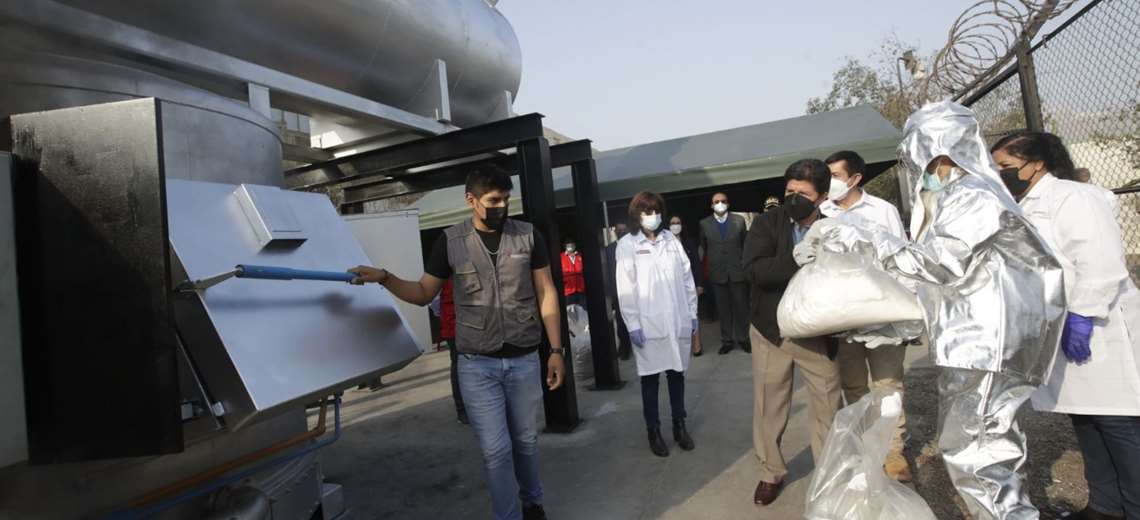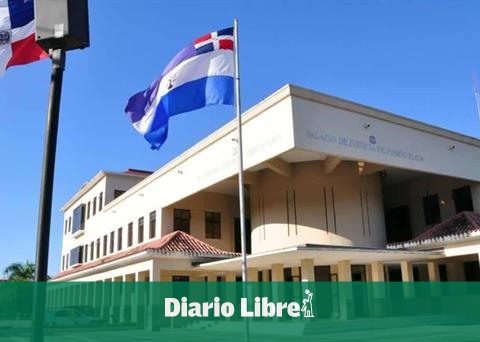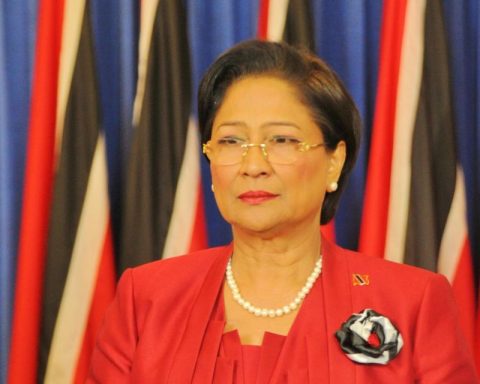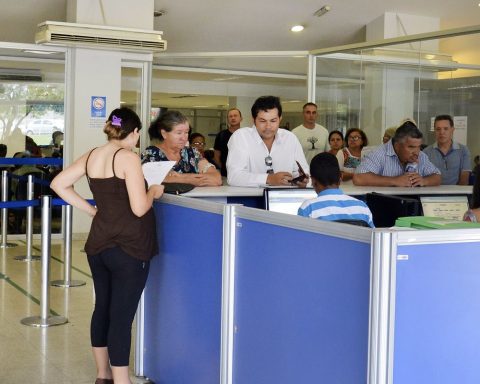The anti-narcotics police of Peru, one of the largest producers of cocaine in the worldannounced this Monday that it began incinerating more than 16.3 tons of illegal drugs seized in the last four months, a lower figure compared to the 20.7 tons of 2021.
The burning, which will last until May 1includes 6.2 tons of basic cocaine paste, 4.6 tons of cocaine and 5.4 tons of marijuana, as well as other drugs of lesser weight such as poppy and opium.
President Pedro Castillo and Interior Minister Alfonso Chávarry led the drug destruction process by throwing the first bags of the substances into a gas oven installed at a police base east of Lima.
“Drugs and drug trafficking destroy and take away our freedom. No space should be given up to drug trafficking and all those illicit activities,” Castillo told the press.
“We are firm in not lowering our arms in the face of the scourge that destroys children and young people, that for years has done permanent damage to society and families,” added the president.
The police carry out anti-drug operations in the coca-growing valleys located at the confluence of the Apurímac, Ene and Mantaro rivers, in the east of the country. Remnants of the Shining Path guerrilla allied to drug trafficking still operate in these areas, according to the police.
“The State’s war against illicit drug trafficking has no breaks or rest. Drug trafficking generates the deforestation of our tropical forests,” said Interior Minister Alfonso Chávarry.
According to the UN, Peru, Colombia and Bolivia are the world’s largest producers of coca leaf and cocaine. It is estimated that Peruvian production is around 400 tons of cocaine per year. In Peru, more than 84 tons of drugs were incinerated in 2021, despite the context of the coronavirus pandemic, according to the police.
The anti-narcotics police of Peru, one of the largest producers of cocaine in the worldannounced this Monday that it began incinerating more than 16.3 tons of illegal drugs seized in the last four months, a lower figure compared to the 20.7 tons of 2021.
The burning, which will last until May 1includes 6.2 tons of basic cocaine paste, 4.6 tons of cocaine and 5.4 tons of marijuana, as well as other drugs of lesser weight such as poppy and opium.
President Pedro Castillo and Interior Minister Alfonso Chávarry led the drug destruction process by throwing the first bags of the substances into a gas oven installed at a police base east of Lima.
“Drugs and drug trafficking destroy and take away our freedom. No space should be given up to drug trafficking and all those illicit activities,” Castillo told the press.
“We are firm in not lowering our arms in the face of the scourge that destroys children and young people, that for years has done permanent damage to society and families,” added the president.
The police carry out anti-drug operations in the coca-growing valleys located at the confluence of the Apurímac, Ene and Mantaro rivers, in the east of the country. Remnants of the Shining Path guerrilla allied to drug trafficking still operate in these areas, according to the police.
“The State’s war against illicit drug trafficking has no breaks or rest. Drug trafficking generates the deforestation of our tropical forests,” said Interior Minister Alfonso Chávarry.
According to the UN, Peru, Colombia and Bolivia are the world’s largest producers of coca leaf and cocaine. It is estimated that Peruvian production is around 400 tons of cocaine per year. In Peru, more than 84 tons of drugs were incinerated in 2021, despite the context of the coronavirus pandemic, according to the police.
;


















